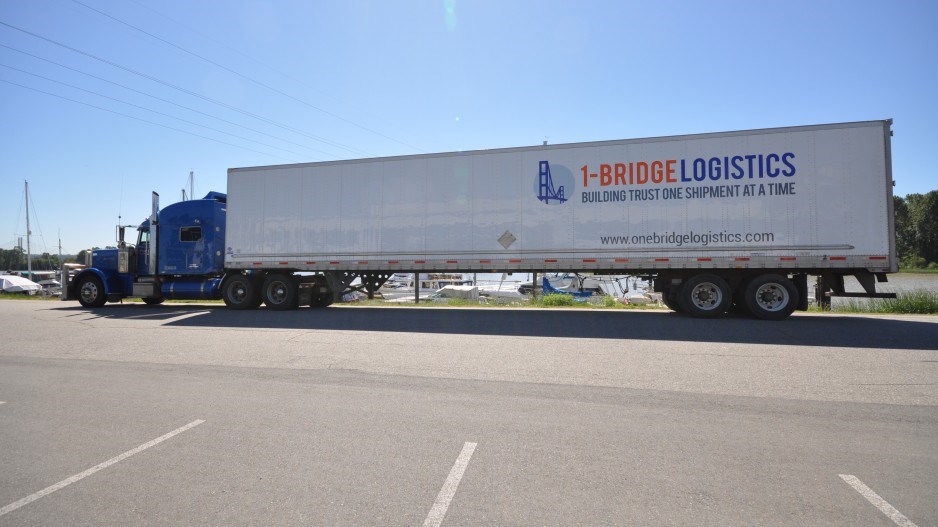It’s a sunny morning in southern California, and a large truck is being loaded with hundreds of cases of alcoholic beverages.
The cases are heading to a liquor store in Vancouver, but before their journey starts, Rory Smith makes a quick call.
“Our truck is about to leave,” he tells one of his regular clients in California. “Do you need anything moved to BC?”
“Yes,” says the voice on the other side of the receiver, and in minutes the truck is on its way to a second pick up.
As the truck makes its way north, Smith’s customers will receive daily notifications on its whereabouts, and three days later, when it unloads its cargo in Vancouver, they will receive a detailed report of the trip.
The unloaded truck is then ready to head back south—except Smith has arranged for it to pick up a large shipment of rebar from a factory in Richmond, which needs to be at a construction site in California in three days.
By consolidating the freight and increasing efficiency in this way, Smith can move his client’s products across the border at a lower cost.
“The marketplace has become truly global,” says Smith, who is the co-founder and head of sales at 1-Bridge Logistics, a Vancouver-based company dedicated to optimizing supply chains. “Everyone from a manager at a large construction site to a mom and pop operation in Richmond is stocking things from the United States or Asia or Europe or South America, and needs those products to be transported efficiently in order to be competitive.”
Which is where Smith and his team of supply chain specialists come in. “Our job is to ensure that that happens,” he says.
The importance of optimizing supply chains
Transporting product from one place to another in a cost-efficient and timely manner is extremely important for most businesses to succeed.
“If you don't have a reliable supply chain partner and your product doesn’t arrive to its destination on time, you’re going to lose a lot of money on sales and credibility,” Smith says. “That’s why transportation is critical to beat your competitor, land new business, and generate growth for your own organization.”
According to a study published by the Van Horne Institute – a trade policy think tank based in Calgary – optimizing supply chains "increases revenue, extends asset life, protects brand and reputation, increases productivity, reduces costs, and manages risks".
This is pushing companies to place more and more value in making their supply chains more efficient by making transportation an integral part of their strategic plan:
“There's more emphasis now on streamlining how you're purchasing your products, how you’re getting materials into manufacturing, and how you’re getting your products out,” Smith says. “This has pushed us to figure out new ways to optimize our clients’ supply chains.”
A supply chain revolution
Because everything from pricing to brand image depends on smart logistics, the team at 1-Bridge Logistics has decided to revolutionize long-held industry standards by incorporating new tracking and notification technologies and using an innovative model – the dedicated fleet model – to move things around North America.
This model relies on the use of set, high-volume transportation routes to maximize the use of every single truck, allowing 1-Bridge Logistics to keep costs down for their clients.
In addition to this, 1-Bridge Logistics has partnered with a network of reliable freight operators, giving the company the flexibility to address surges in the marketplace.
“That means that we aren’t limited to a certain capacity: if we wanted to add a couple of carriers to a certain lane, we're able to do that.”
This flexibility is especially important in the construction sector, a surge–based industry that can be affected by anything from weather to currency rates.
“Today, materials come to a site from around the world, and in the construction industry there are many variables that can affect how materials or equipment get transported,” Smith says. “Our model gives us the flexibility and capacity to help these companies adapt to any surges or dips in the market.”
This allows 1-Bridge Logistics to fulfill the promises they make to all of their clients:
“The key outcomes we have for their business is to save them time, save them money, and to mitigate risk,” says Smith.




